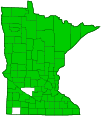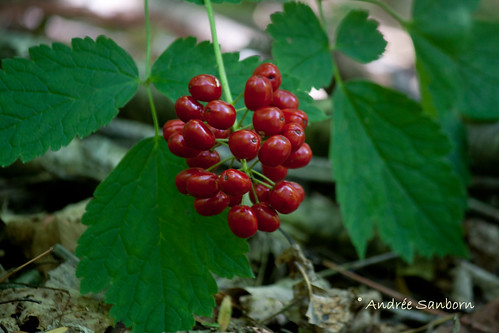red baneberry
(Actaea rubra ssp. rubra)
Conservation Wetland • Description • Habitat • Ecology • Use • Distribution • Taxonomy
Description |
||
Red baneberry is a 18″ to 36″ tall, erect, perennial forb that rises from a large, thick rhizome. The stems are erect and hairless. The leaves are alternate. The lower leaves are on long stalks, the upper leaves on shorter stalks. They are divided into 3 segments, with each segment divided into 3 leaflets. The leaflets are egg-shaped to oblong and may be unlobed or have 1 to 3 lobes. The margins have deep, sharp, irregular teeth. The upper leaflet surface is hairless. The lower surface is usually hairy, at least with hairs along the veins. The inflorescence is a dense, ball-like cluster on a long stalk with 25 or more flowers rising at the end of the stem or from an upper leaf axil. It is ¾″ to 6¾″ long and about as wide as long. The flowers are ¼″ wide. There are 4 to 10 white petals which soon fall off leaving 15 to 50 stamens. The fruit is a nearly globular berry containing several seeds. It is usually red, sometimes white (f. neglecta). When fruiting the pedicels are dull green or brown and slender, thinner than the stalk to which they are attached. |
||
Height |
||
18″ to 36″ |
||
Flower Color |
||
White |
||
Similar Species |
||
White baneberry (Actaea pachypoda) leaflet lower surface is usually hairless. The flower clusters are slightly elongated. The berries are white, rarely red. When fruiting the pedicels are bright red and stout, as thick as the stalk to which they are attached. The form Actaea rubra f. neglecta has white berries. |
||
Habitat |
||
Moderate moisture. Woods. |
||
Ecology |
||
Flowering |
||
May to June |
||
Pests and Diseases |
||
|
||
Use |
||
|
||
Distribution |
||||
|
Sources |
|||
| 10/25/2021 | ||||
Nativity |
||||
Native |
||||
Occurrence |
||||
Common |
||||
Taxonomy |
|||
| Kingdom | Plantae (Plants) | ||
| Division | Tracheophyta (Vascular Plants) | ||
| Subdivision | Spermatophytina (Seed Plants) | ||
| Class | Magnoliopsida (Dicots) | ||
| Superorder | Ranunculanae | ||
Order |
Ranunculales (Buttercups, Poppies, and Allies) | ||
Family |
Ranunculaceae (Buttercup) | ||
| Subfamily | Ranunculoideae (Anemones, Buttercups, Larkspurs and Allies) | ||
| Tribe | Actaeeae (baneberries, cohoshes, and winter aconites) | ||
Genus |
Actaea (baneberries and cohoshes) | ||
| Section | Actaea | ||
| Species | Actaea rubra (red baneberry) | ||
Subordinate Taxa |
|||
Synonyms |
|||
| Actaea spicata ssp. rubra | |||
Common Names |
|||
baneberry red baneberry snakeberry western baneberry |
|||
Glossary
Axil
The upper angle where the leaf stalk meets the stem.
Pedicel
On plants: the stalk of a single flower in a cluster of flowers. On insects: the second segment of the antennae. On Hymenoptera and Araneae: the narrow stalk connecting the thorax to the abdomen: the preferred term is petiole.
Rhizome
A horizontal, usually underground stem. It serves as a reproductive structure, producing roots below and shoots above at the nodes.
Visitor Photos |
|||||
Share your photo of this plant. |
|||||
| This button not working for you? Simply email us at info@MinnesotaSeasons.com. Attach one or more photos and, if you like, a caption. |
|||||
Nancy Falkum |
|||||
Baneberry |
|||||
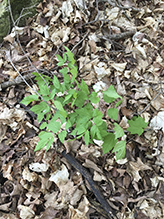 |
|||||
MinnesotaSeasons.com Photos |
|||||
Plant |
|||||
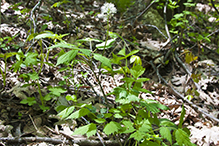 |
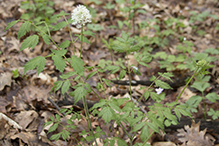 |
||||
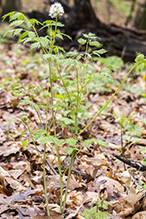 |
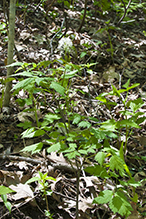 |
||||
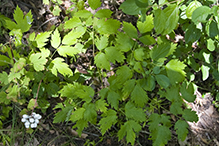 |
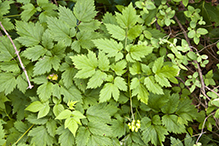 |
||||
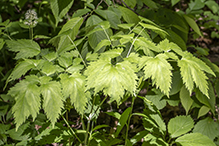 |
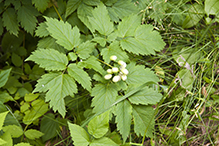 |
||||
Inflorescence |
|||||
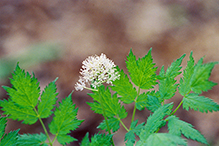 |
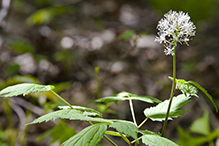 |
||||
Flowers |
|||||
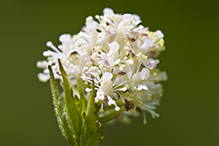 |
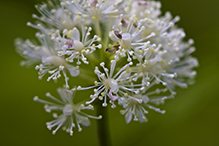 |
||||
Leaves |
|||||
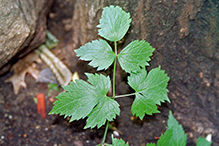 |
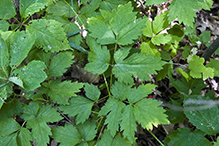 |
||||
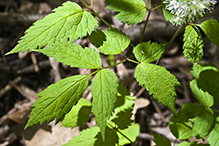 |
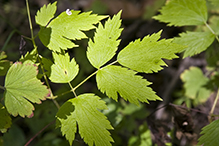 |
||||
Infructescence |
|||||
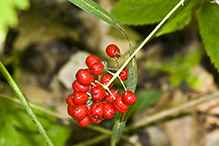 |
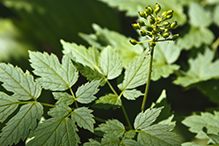 |
||||
White fuit on red baneberry (f. neglecta) |
|||||
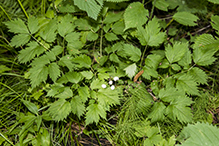 |
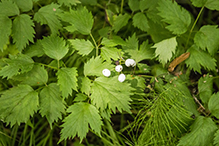 |
||||
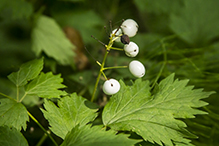 |
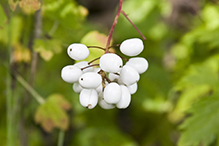 |
||||
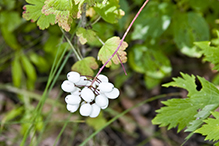 |
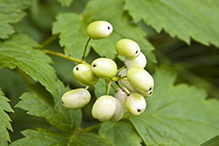 |
||||

Visitor Videos |
|||
Share your video of this plant. |
|||
| This button not working for you? Simply email us at info@MinnesotaSeasons.com. Attach a video, a YouTube link, or a cloud storage link. |
|||
Other Videos |
|||
| 02 Actaea rubra Séquence 4-Vivaces printanières 1 (iPhone et iPod).m4v Jean Désorcy |
|||
About
Uploaded on Jan 9, 2010 L'actée rouge du printemps à l'automne. Red Banberry from spring to fall. Actaea roja de la primavera hasta el otoño. |
|||
| Red Baneberry Xan Bonneau |
|||
About
Published on May 15, 2013 No description available. |
|||
| Sweet Cicely and Baneberry ironDsteele |
|||
About
Published on Aug 6, 2013 Part 4 in an ongoing series of documentaries on wild edible, medicinal, and toxic plants. I'm covering "Sweet Cicely" and "Baneberry" with a focus on how to tell them apart from one another. All video footage is recorded by me on the GoPRO Hero 2. Some of the pictures taken from reputable sources on the internet. Click 6:42 to skip to Baneberry. |
|||

Visitor Sightings |
|||||
Report a sighting of this plant. |
|||||
| This button not working for you? Simply email us at info@MinnesotaSeasons.com. Be sure to include a location. |
|||||
| Nancy Falkum 5/14/2018 |
Location: Bald Eagle Bluff SNA Baneberry |
 |
|||
| Connie Thompson 7/15/2018 |
Location: In my flower bed (weed bed) next to my house which is right next to Hwy 34, east of Detroit Lakes, MN about 2 miles. Missed seeing the flowers but the red berries caught my eye. |
||||
MinnesotaSeasons.com Sightings |
|||||
Avon Hills Forest SNA, North Unit Bertram Chain of Lakes Regional Park Carpenter St. Croix Valley Nature Center Charles A. Lindbergh State Park Clifton E. French Regional Park Forestville/Mystery Cave State Park Itasca Wilderness Sanctuary SNA Lake Alexander Woods SNA, South Unit Mary Schmidt Crawford Woods SNA Nerstrand Big Woods State Park Northern Tallgrass Prairie NWR, Rengstorf Unit P.N. and G.M. Nelson Wildlife Sanctuary |
|||||

|
Created: Last Updated: © MinnesotaSeasons.com. All rights reserved. |
